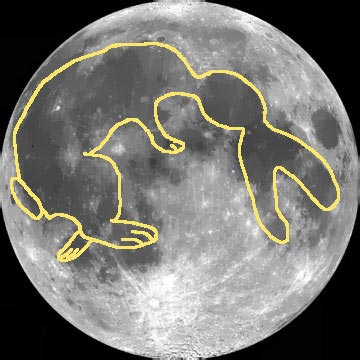 | ||||
| The Hare Mycomusicologist Clock (from The Hermitage) |
and the moon in anger, heating a stone that then burned the Hare's mouth, causing like Shakespeare's Flibbertigibbet a 'hare lip'.
"This is the foul fiend Flibbertigibbet: he begins
at curfew, and walks till the first cock; he gives
the web and the pin, squints the eye, and makes the
hare-lip; mildews the white wheat, and hurts the
poor creature of earth."
King Lear | Act III, scene IV
at curfew, and walks till the first cock; he gives
the web and the pin, squints the eye, and makes the
hare-lip; mildews the white wheat, and hurts the
poor creature of earth."
King Lear | Act III, scene IV
and to end, a poem by Walter de la Mare
In the black furror of a field
I saw an old witch-hare this night;
And she cocked a lissome ear,
And she eyed the moon so bright,
And she nibbled of the green;
And I whispered "Whsst! witch-hare,"
Away like a ghostie o’er the field
She fled, and left the moonlight there.on hare witchery...
And she cocked a lissome ear,
And she eyed the moon so bright,
And she nibbled of the green;
And I whispered "Whsst! witch-hare,"
Away like a ghostie o’er the field
She fled, and left the moonlight there.on hare witchery...
Wishing you all a happy and mad March...


With such beautiful poetry its out of place to answer your questions: female hare's are only in-season for a few days and have to fight off amorous suitors, having mated or not in season. Hair lip cheiloschisis early Dr.'s described the facial appearance of like having a hair drawn across the face.
ReplyDeleteLets keep to the poetry